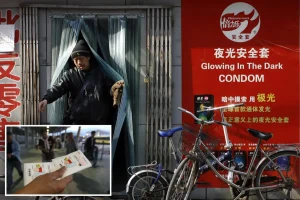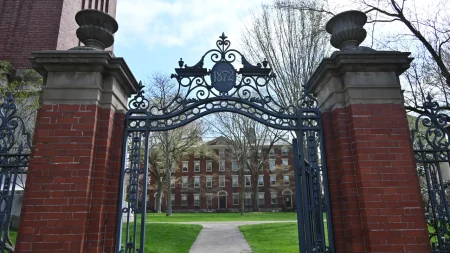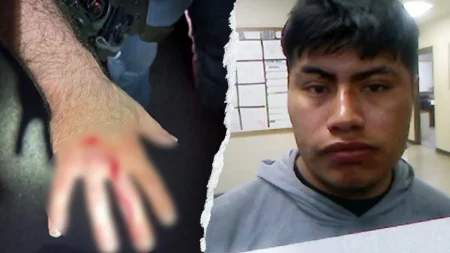The Royal Heist: Inside the Shocking Theft of Priceless Crown Jewels
Historic Treasures Vanish: Royal Collection Targeted in Audacious Museum Theft
In what authorities are calling one of the most significant heritage crimes of the decade, an audacious heist has resulted in the disappearance of irreplaceable royal jewels from the nation’s premier historical collection. The stolen items include glittering royal tiaras, ornate necklaces, and diamond-encrusted earrings—pieces that represent not just immense monetary value but centuries of cultural heritage and royal history. Museum officials, speaking at an emergency press conference yesterday, confirmed that security protocols had been breached during what appears to have been a meticulously planned operation that targeted specifically the royal collection’s most prestigious pieces.
“These artifacts are not merely valuable jewels; they are physical connections to our national story,” said Eleanor Harrington, chief curator of the Royal Historical Collection. “Each tiara, necklace, and earring carries with it stories of coronations, royal marriages, and diplomatic exchanges that shaped our country’s trajectory.” The stolen items, dating primarily from the 18th and 19th centuries, include the Duchess of Wellington’s emerald tiara, commissioned in 1816 following the Battle of Waterloo; the Sovereign’s Ruby Parure necklace, featuring stones presented to Queen Victoria by Ottoman diplomats; and the Pearl Drop earrings worn by five consecutive queens during their coronation ceremonies. Art crime specialists estimate the collection’s market value at over £75 million, though museum authorities emphasize that their historical significance makes them truly priceless.
Security Breach Raises Questions About Museum Vulnerabilities
The sophistication of the theft has shocked security experts and raised serious questions about the vulnerability of even the most protected national treasures. According to preliminary investigations, the perpetrators appeared to have intimate knowledge of the museum’s security systems, surveillance blind spots, and staff routines. The theft occurred during a 28-minute window between security guard rotations, with perpetrators reportedly using specialized equipment to disable alarm systems and thermal sensors protecting the display cases. “This wasn’t opportunistic; it was calculated with military precision,” noted Detective Chief Inspector Ramona Morrison, who leads the Metropolitan Police’s Art and Antiquities Unit. “The evidence suggests we’re dealing with experienced professionals who may have been planning this operation for months, if not years.”
The heist has prompted calls from heritage protection advocates for a comprehensive review of security measures at major museums and cultural institutions nationwide. Parliamentary representatives have already announced plans for an emergency session to discuss potential funding increases for heritage security infrastructure. Security consultant and former Scotland Yard commander Victor Alessandri told reporters: “Museums housing national treasures often struggle with the contradiction of needing to display priceless items to the public while simultaneously protecting them from those with criminal intent. This case highlights the urgent need to employ more sophisticated countermeasures, including AI-enhanced surveillance systems, biometric access controls, and potentially even nanotechnology tracking devices embedded within the artifacts themselves.”
International Art Theft Networks: Following the Trail of Royal Jewels
Investigators are exploring potential connections to international art theft networks known to operate across Europe and the Middle East. The global black market for cultural treasures has expanded dramatically in recent years, with estimates suggesting it now represents the third most lucrative criminal enterprise worldwide, after drugs and weapons trafficking. “Royal jewels present a particular challenge for thieves,” explained Dr. Sophia Kaplan, criminologist specializing in art crime at Cambridge University. “Their iconic status makes them essentially impossible to sell on legitimate markets, which suggests the perpetrators either have a specific private collector already arranged as a buyer, or they plan to dismantle the pieces to sell the individual gemstones separately—a tragic cultural loss either way.”
Interpol has issued an international alert and activated its specialized Works of Art unit to coordinate cross-border investigations. Particular attention is being focused on monitoring known transit routes for stolen art, including ports in Amsterdam, Antwerp, and Dubai. Digital forensics experts are simultaneously scanning darknet marketplaces for any communications regarding the stolen pieces. Historical precedents offer both caution and hope; in similar cases, approximately 40% of stolen royal treasures have eventually been recovered, though often decades later and frequently with significant damage or missing elements. The museum has released detailed photographs and technical specifications of each stolen piece to assist in their identification and potential recovery, while offering a substantial reward for information leading to the return of these national treasures.
The Ripple Effect: Cultural and Economic Impact of Heritage Crime
The theft has reverberated beyond the immediate security concerns, affecting tourism, national morale, and the broader cultural sector. The royal collection’s exhibition had been a cornerstone of the season’s cultural calendar, with advance ticket sales exceeding 250,000 before the theft forced its indefinite closure. Tourism officials estimate the economic impact could reach £12 million in lost revenue for surrounding businesses that rely on museum visitors. “These jewels aren’t just objects in a display case; they’re anchors of our cultural tourism industry,” remarked Tourism Board director Jonathan Fielding. “Visitors from around the world come specifically to witness these physical connections to royal history.”
More profound than the economic impact is the cultural loss felt across generations. Schools had scheduled hundreds of educational visits to the exhibition, intended to bring history curricula to life for thousands of students. Community programs designed for elderly residents, many with personal memories of seeing the jewels displayed during previous royal celebrations, have been canceled. The theft has touched a nerve with the public in ways that transcend mere property crime. Social media has exploded with expressions of national dismay, with the hashtag #ReturnTheJewels trending across platforms. Cultural historians note that such reactions reflect how deeply intertwined these artifacts are with collective identity and national heritage. “When objects of this significance are stolen, something more profound than property is taken,” observed cultural anthropologist Dr. Elena Vasquez. “These jewels function as material embodiments of shared history—their absence creates a tangible void in our cultural landscape.”
Safeguarding Heritage: The Path Forward for Museums and Nations
As the investigation continues, museum administrators, security experts, and heritage protection advocates are engaged in urgent discussions about the future of cultural treasure protection. The case has accelerated conversations about employing emerging technologies, including blockchain provenance tracking, isotope fingerprinting of gemstones, and advanced biometric security systems. Several technology firms have already approached the museum with proposals for developing customized security solutions that would make similar thefts virtually impossible while maintaining public accessibility. “The challenge moving forward,” noted Museum Association director Hamish Blackwell, “is striking the appropriate balance between security and accessibility. These treasures belong to the nation—locking them away completely defeats their purpose, yet clearly our current protective measures require significant enhancement.”
International cooperation will be crucial in both recovering the stolen items and preventing future heists. UNESCO representatives have called for an emergency summit of member nations to strengthen protocols surrounding heritage protection and cross-border cooperation in combating cultural property crimes. Meanwhile, insurance underwriters specializing in cultural artifacts have announced plans to develop new risk assessment frameworks specifically for royal collections. The theft may ultimately result in positive changes for heritage protection globally, as museums worldwide are now reexamining their own security vulnerabilities in light of this high-profile case. As the investigation enters its second week, the public remains captivated by both the audacity of the crime and the poignant absence of these glittering connections to a shared past. The empty display cases stand as a stark reminder of what has been lost—and what nations must do to protect the irreplaceable treasures that illuminate our collective history.










